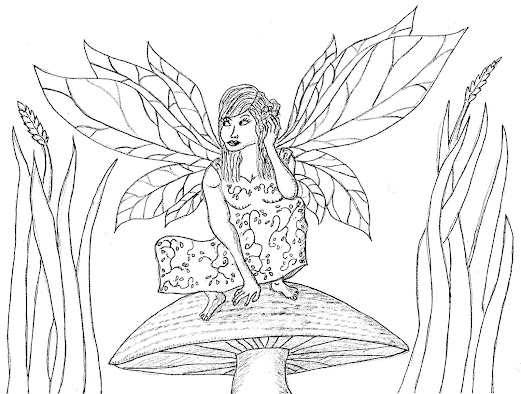Welcome to my free coloring pages blog.
There are no ads and no fees to view and print coloring pages to color.
Today's new drawing is a Firewatch Fairy.
Firewatch Fairy
Firewatch Fairies are a type of Forest Fairy that tend to the forest, but also keep a sharp eye out for wildfires. In fact, if campers leave a fire smoldering IF a Firewatch Fairy is nearby, they will put it out. They do this with a water charm where they use their wand to remove water from the air and use the water to douse the fire.
With as many mortal campers as there are, there are not enough Firewatch Fairies to douse every carelessly abandoned fire. So douse the fire BEFORE you leave the camp!
Like most Fairies, this Firewatch Fairy, whose name is Illumbra, by the way, is seen here on a tall stump. She is watching for fires. Notice that she has a larger than average wand. This is because larger wands can be more powerful and water charms for dousing fires require a lot of power.
Illumbra is seen here in mortal size, but of course, she often is Fairy size at around 5 inches tall. That is just under 13 cm tall. Notice that she is also wearing a flying belt. Fairies can fly short distances or long distances at slow speed without a flying belt. But a Fairy wearing a flying belt can fly far distances at high speed. Firewatch Faires need the flying belt to cover more area as they search for possible fires and for mortal's mistakes... like abandoned or untended campfires.
Wild animals, who are not as intelligent as mortals or Fairies, still recognize that Firewatch Fairies are helping keep them safe. By the way, most Forest Fairies can communicate with the animals that they care for. That is why you see two friendly deer in the background and under the pine trees.
I should also mention that Fairy tech is more advanced than mortal tech, but even the Faires are very challenged by big forest fires and other types of wildfires. So do your best to not be part of the problem and douse your fires, don't drive on dry grass, don't go target shooting near dry brush, etc., etc.
NOTE: This drawing, in printable form, can be found by clicking on the button labeled Fantasy, Myths, and Circus. Then scroll down to the bottom for this new drawing. All new drawings are at the bottom of the correct list. Below are some drawings of Fairies from previous posts. These drawings, in printable form, will be found further up the correct list.
Fairy sitting under a Tree

































